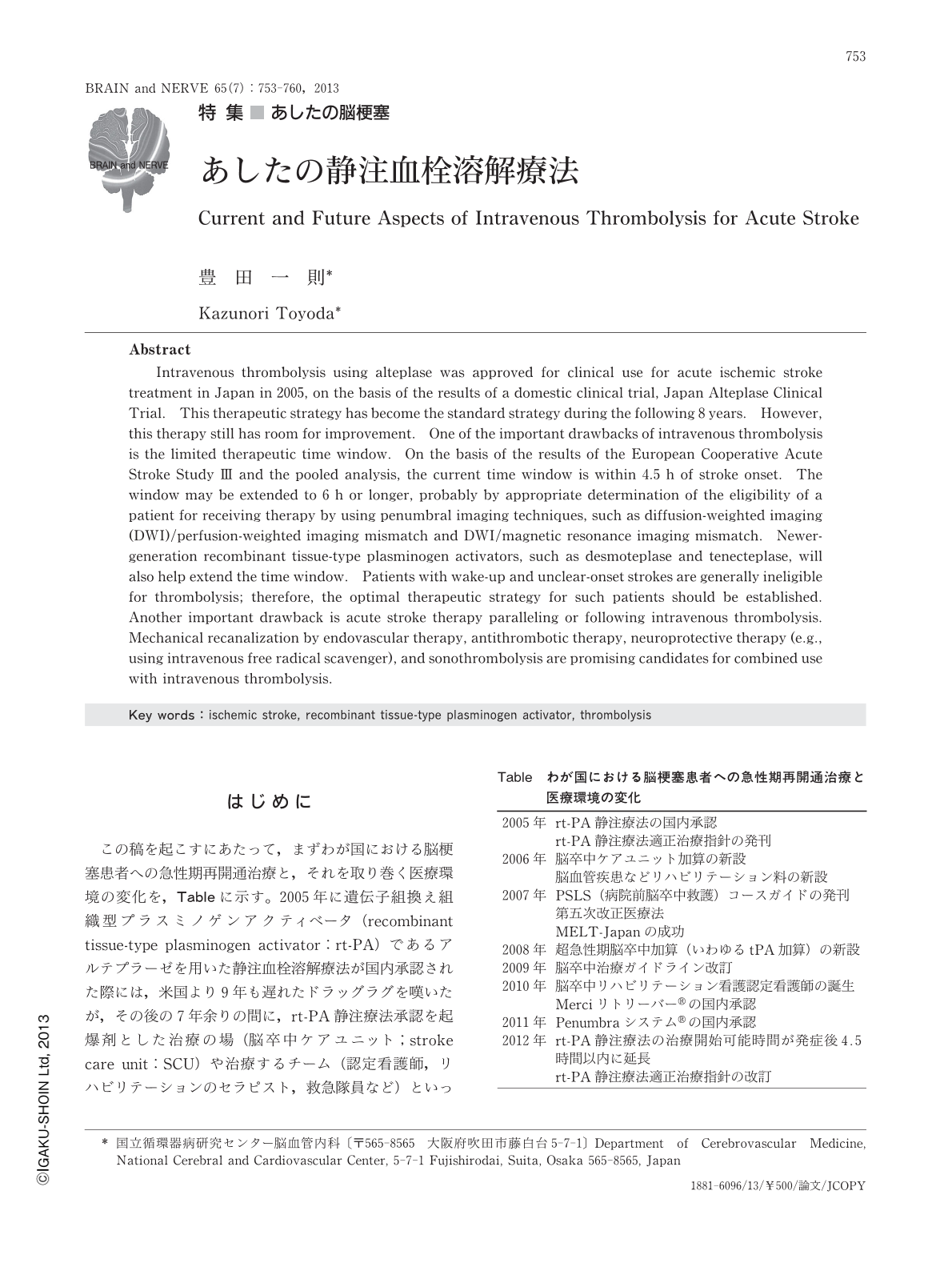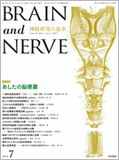Japanese
English
- 有料閲覧
- Abstract 文献概要
- 1ページ目 Look Inside
- 参考文献 Reference
はじめに
この稿を起こすにあたって,まずわが国における脳梗塞患者への急性期再開通治療と,それを取り巻く医療環境の変化を,Tableに示す。2005年に遺伝子組換え組織型プラスミノゲンアクティベータ(recombinant tissue-type plasminogen activator:rt-PA)であるアルテプラーゼを用いた静注血栓溶解療法が国内承認された際には,米国より9年も遅れたドラッグラグを嘆いたが,その後の7年余りの間に,rt-PA静注療法承認を起爆剤とした治療の場(脳卒中ケアユニット;stroke care unit:SCU)や治療するチーム(認定看護師,リハビリテーションのセラピスト,救急隊員など)といった環境の変化が,急速に進んだことがわかる。2007年に定められた第五次改正医療法で,脳卒中がわが国の四大疾病と定められたことが,その象徴に思える(2013年には精神疾患が加わり,「五疾病」と称されるようになった)。
2010年以降は,血栓溶解療法の相方となるもう1つの再開通療法,血管内治療のデバイス承認が続き(Merciリトリーバー®,Penumbraシステム®),超急性期治療の拡充に拍車をかけた。そして2012年にはrt-PA静注療法の治療開始可能時間が発症4.5時間後まで延長され,時期を合わせてこの治療の適正治療指針も改訂された1,2)。半年を経た2013年春の諸学会での研究発表を聴く限りでは,安全性を損なうことなく治療機会を増やす結果につながっているようである。
今や静注血栓溶解療法はわが国の脳梗塞標準治療として根づいたが,この治療は決して完成されたものではない。慢性期の完全自立への復帰率が5割に満たないことからも明らかなように,改善の余地と可能性をまだ多く残している。ここでは,静注血栓溶解療法の改善のための課題として,特に治療開始可能時間と併用療法・後療法の問題を取り上げて解説し,あしたの静注血栓溶解療法を占う。
Abstract
Intravenous thrombolysis using alteplase was approved for clinical use for acute ischemic stroke treatment in Japan in 2005, on the basis of the results of a domestic clinical trial, Japan Alteplase Clinical Trial. This therapeutic strategy has become the standard strategy during the following 8 years. However, this therapy still has room for improvement. One of the important drawbacks of intravenous thrombolysis is the limited therapeutic time window. On the basis of the results of the European Cooperative Acute Stroke Study III and the pooled analysis, the current time window is within 4.5 h of stroke onset. The window may be extended to 6 h or longer, probably by appropriate determination of the eligibility of a patient for receiving therapy by using penumbral imaging techniques, such as diffusion-weighted imaging (DWI)/perfusion-weighted imaging mismatch and DWI/magnetic resonance imaging mismatch. Newer-generation recombinant tissue-type plasminogen activators, such as desmoteplase and tenecteplase, will also help extend the time window. Patients with wake-up and unclear-onset strokes are generally ineligible for thrombolysis; therefore, the optimal therapeutic strategy for such patients should be established. Another important drawback is acute stroke therapy paralleling or following intravenous thrombolysis. Mechanical recanalization by endovascular therapy, antithrombotic therapy, neuroprotective therapy (e.g., using intravenous free radical scavenger), and sonothrombolysis are promising candidates for combined use with intravenous thrombolysis.

Copyright © 2013, Igaku-Shoin Ltd. All rights reserved.


